A Romantic Anchor
by Dr. Harold Wm. Wood, D.V.M.
Written October 6, 1994
Transcribed, edited, and compiled by Harold W. Wood, Jr.
[Introduction: This story written by my Dad tells how he met and wooed my mother, Eva Imes Wood, and at the same time discovered what became his life-long career - Veterinary Medicine. Some paragraphs have been moved to improve the flow of the story and matching with the images, but the text is all in the words of my father, Dr. Harold Wm. Wood, D.V.M. ]
Side-bars, parenthetical notes, and images added by Dr. Wood’s son, Harold W. Wood, Jr. in July, 2020, updated June, 2021. Images from family collection of Harold Wood, Jr. and his father, Harold W. Wood, D.V.M.
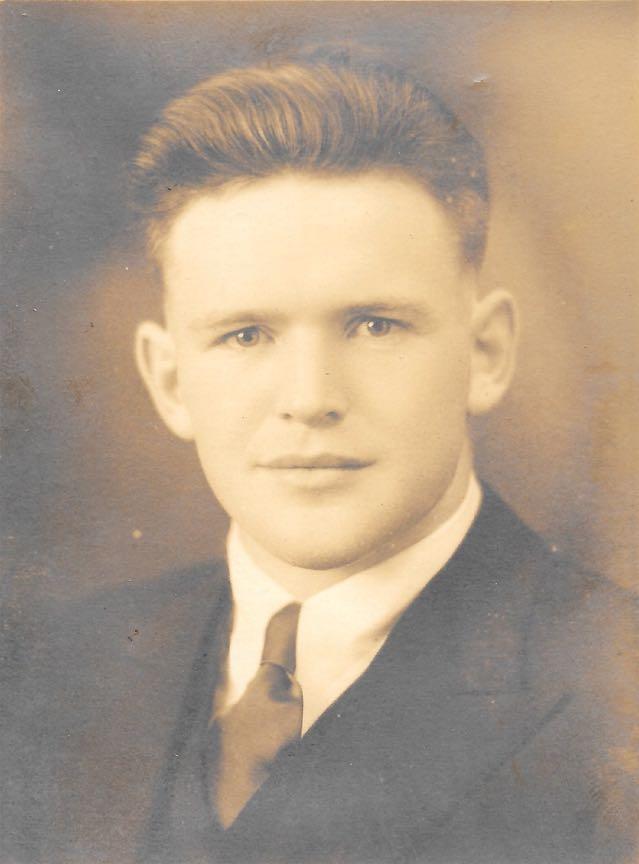

My dad labeled this portrait: “Dr. Allen Northrup, my 1st year college roommate & lifetime friend.” Notation on back gives name of Mrs.Northrup: Winnie Jeane Northrup, and the date: April, 1933
It began at mid-day midOctober, 1934. I had finished a short assignment as exhibitor for the U.S. Biological Survey at California State Fair in Sacramento, California.
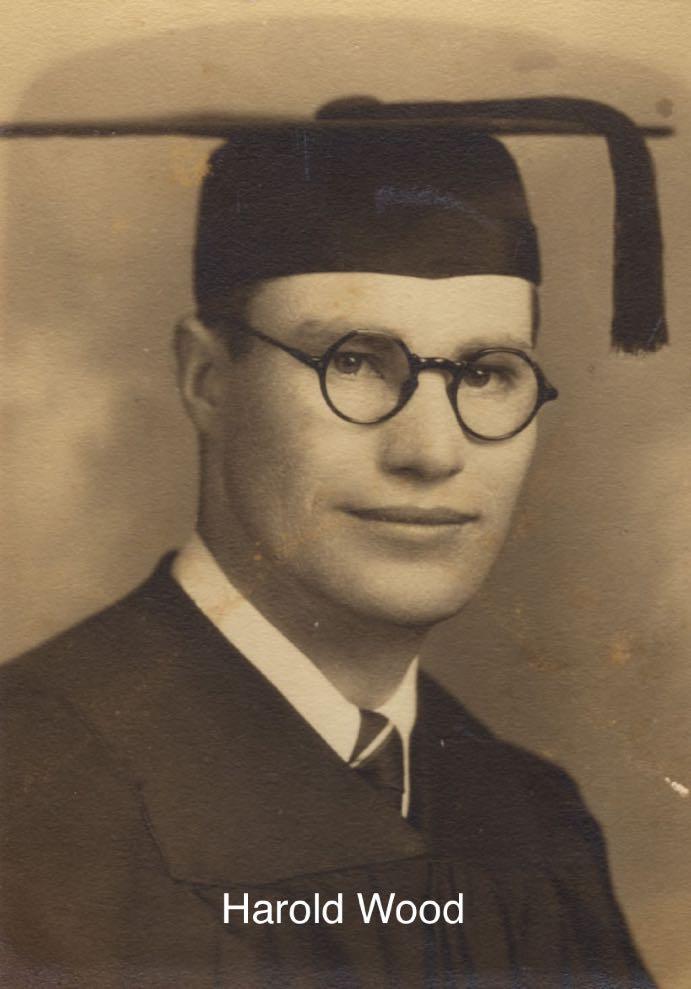

I arrived at the San Francisco Pet Hospital [It is still there! 1371 Fulton St San Francisco, CA] during the veterinarian’s mid-day break.
A young lady was receptionist.
I told her Dr. M. A. Northrup [This is Dr. Melvin Albert Northrup, who Dad explains later was called “Al” by his friends] and I had been roommates during our first year of college at Willamette University in Salem Oregon . 1927-1928.
Dr. Northrup had graduated from Washington State College of Veterinary Medicine in 1932. I had graduated from Oregon State University, Corvallis, OR, June 4, 1934.
The receptionist said she was a friend of Dr. and Mrs. Northrup. She met them at Washington State University.
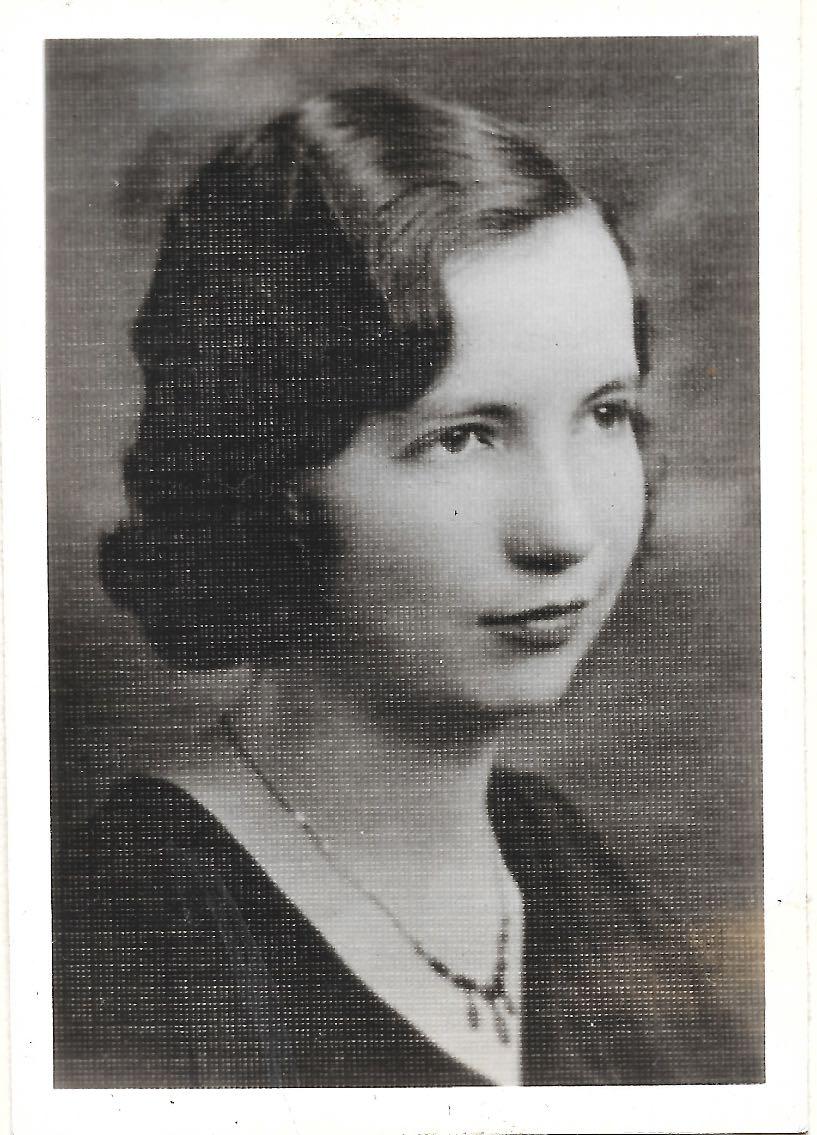
She was currently taking graduate courses at the University of California in Berkeley. [Note: Actually, she would had already received in June of 1934 her California General Secondary Credential at UC Berkeley. (Letter by Eva Carol Imes Wood to her daughter Evelyn dated 31 Aug 1967:)]
This hospital work was a part time job. She did not like the work but she needed the money to pay college expenses.
Her grey eyes reflected a friendly but serious attitude. Her neatly groomed black hair added beauty to her smiling face. Carefully selected words revealed that she was sincere. Advanced training in English Language and Drama were evident during my short conversation. Her name was Eva Carol Imes.
Dr. Northrup was surprised to see me. I had not announced my unexpected visit.
After a friendly introduction to Eva the receptionist, Dr. Northrup said,”Let’s take a look around the hospital. We can visit tonight. I have a big schedule of surgery this afternoon.”
We spent a short time updating our activities during the past six years; a short period of reminiscences about our first year of college experienced ended when Dr. Northrup (who I will refer to as “Al” from now on in this story) asked “What are your immediate plans?”
“To find a job!” I answered. “I’m looking.”
Al handed me a broom, “How is this for a starter?” He added that his kennel man was on sick leave, and a replacement was needed badly to fill that job.
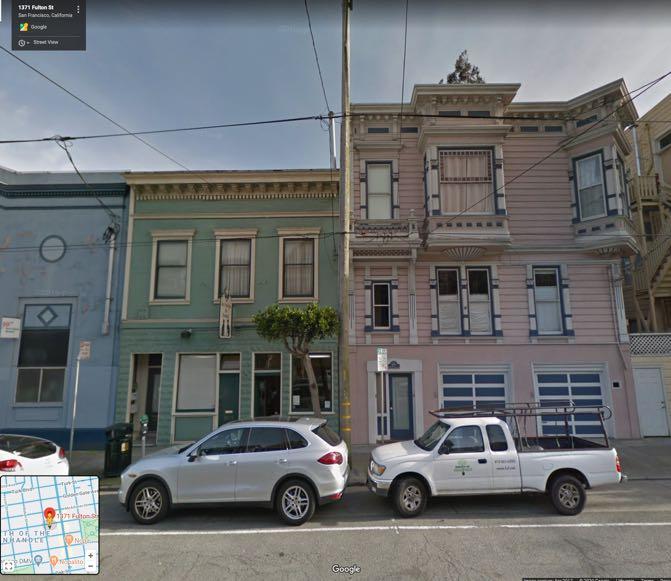

I was introduced to a family new field of Veterinary Medicine. The Dog and Cat Hospital practice was well established. I was surprised that pet owners would spend money on pet care! Al was a fine veterinarian. He had gained ownership of one of the best established small animal hospitals in San Francisco. [In fact, the San Francisco Pet Hospital is believed by the current owners to have been established in 1905, and survived the 1906 SF Earthquake!]
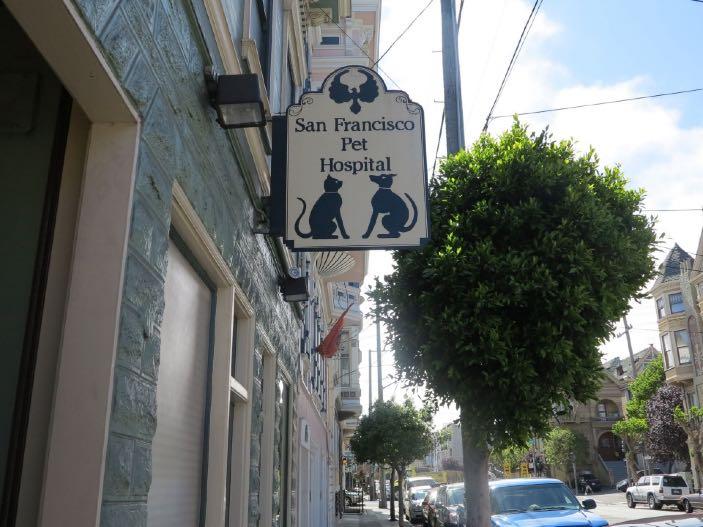

Page of 2 17
The kennel work, driving ambulance and assisting in treatment of dogs and cats opened my eyes to an interesting prospect. My temporary relief work extended into several months. The pet hospital staff welcomed me. Al told me they had never seen anyone who could handle animals with such ease. I had a natural repertoire with animals. “It’s too bad you didn’t graduate from Veterinary Medicine instead of entomolgy,” he added.
Another big surprise came one night when Al suggested that he was taking Winnie, his wife, to Topsy’s Roost Chicken House for dinner and an evening of dancing. He thought it would be nice if I would invite Eva. We would have a foursome. He assured me Eva would accept if I asked her!

Driving south along the beach from the Cliff House, the first building you came to was Topsy’s Roost, a very popular Chicken Dinner House and Nightclub.
Photo: Topsy’s Roost Chicken House and Dance Hall, circa 1930, from opensfhistory.orgwnp66.088.jpg
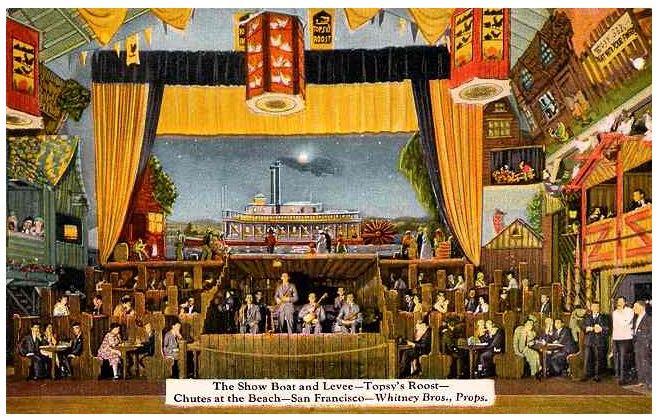

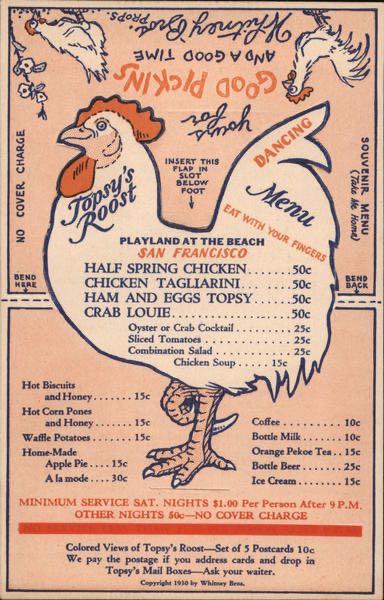
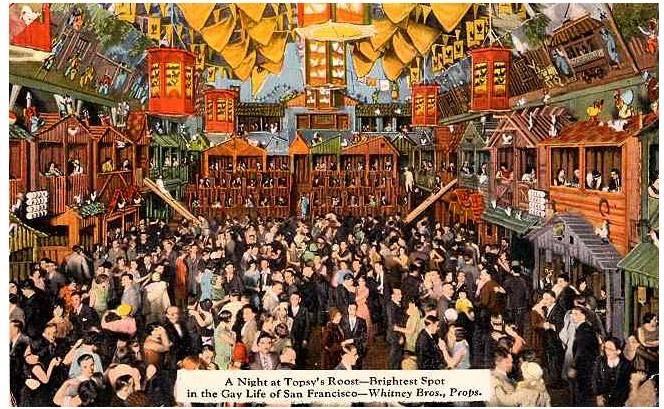
George Whitney opened Topsy’s Roost in 1929 and it soon became San Francisco’s most favorite spot at Playland-at-the-Beach. You could dance to a live orchestra and there was seating on the main floor as well as the balcony. If you were sitting on the balcony level and you wanted to dance, there were slides to take you right down onto the dance floor.
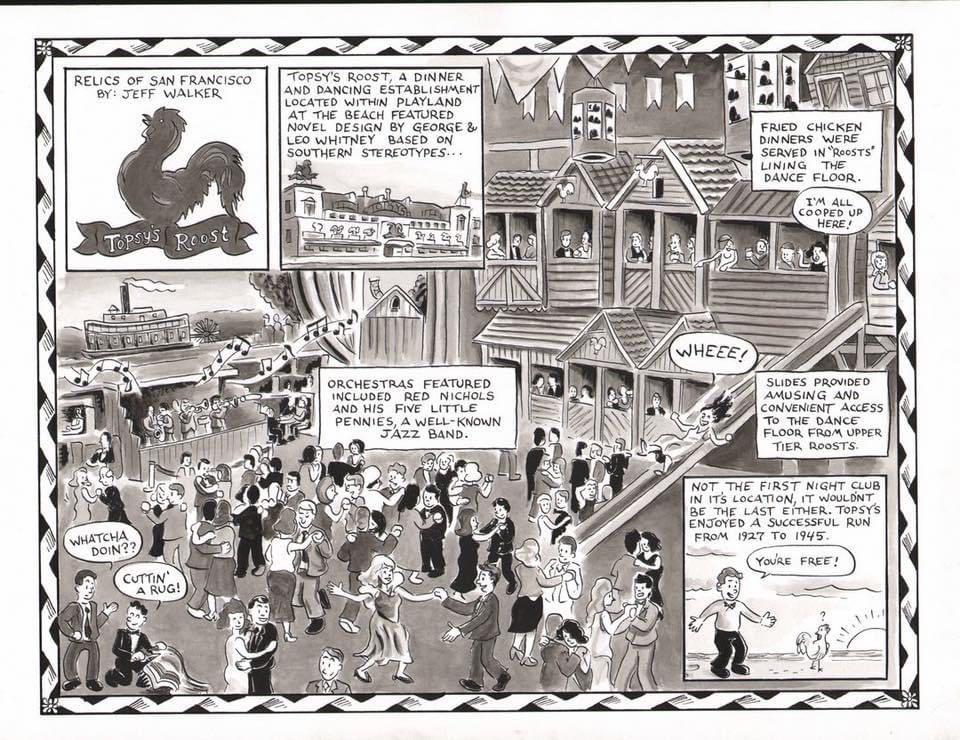
Al and Winnie were not sure if I could dance. When we were at Willamette University we all had different attitudes and life styles. But at Oregon State University I had learned to dance.
The dance floor was uncrowded. I felt great. The music was inspiring. Eva was a good dancer. We laughed and danced. The band played on. Al and Winnie were mystified!
A few days before the dinner/dance party, Al said to me: “Eva is so reserved and shy. She is really a nice girl, but too reserved. Too old fashioned. She is frightened of men. She has a friendly smile but aloof actions. I’d bet fifty dollars to ten dollars she couldn’t be kissed after a month’s long dating!”
“I will take that bet!” I bantered.
The morning following the evening at Topsy’s, Al came to me saying, “I feel I am going to lose that bet!”
“No no, Al, you won’t lose it because I want to call it off. I don’t want a false motive for my feelings. I am afraid Eva and me are falling in love. It would be cruel to proceed on with a bet motivating goal.
“Ok, it’s settled: no bet.”
The weeks rolled along with Eva and I having regular dates but not too often. she had truly danced her way into my heart. Eva was still resisting. at the end of each date, I would say, “I’ll see you on our honeymoon!” Then add, “the first twenty no’s don’t count!”
I never lost hope even though our romance hit some rough spots. These were mostly due to the lack of employment in which fields we were qualified to work. During the next three years, we are not able to find work close to each other.
After three years of being bounced from one location to another, even though I did have steady enjoyable work in agricultural research, my employer failed to communicate the future plans for my status with the California Packing Cooperative. This did come when I tendered my resignation. I gave up my position to go to veterinary medical training at Texas A & M College.

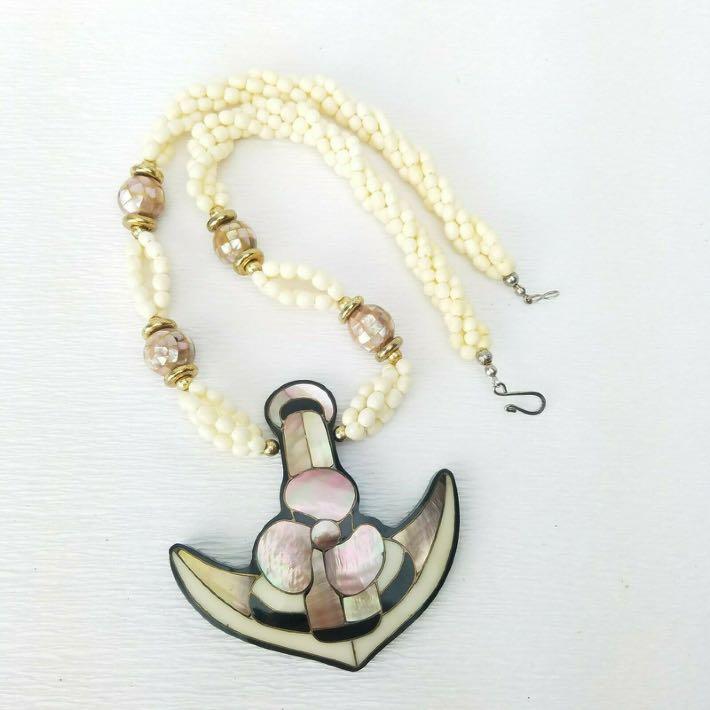
Could the “mother of pearl” anchor my Dad gave my future Mom have looked something like this?
I was too busy and uncertain of my activities that I failed to keep in contact with Eva. At one time I gave her an anchor made of mother of pearl, probably abalone shell. With the gift carefully wrapped, I sent a card saying, “This is your anchor in me. When you decide you have been tossed about long enough and need security of my love, let me know.”
Due to my frequent moving and my neglect of not informing Eva of my whereabouts, we lost contact for awhile. It was now her turn to find me.She wrote to my parents at Christmas time 1937, seeking to find me. Eva wrote a letter saying to me, “Remember that anchor? I’m lost at sea. Please find a safe harbor for me!”
We were married July 3, 1838 in Salt Lake City, Utah.

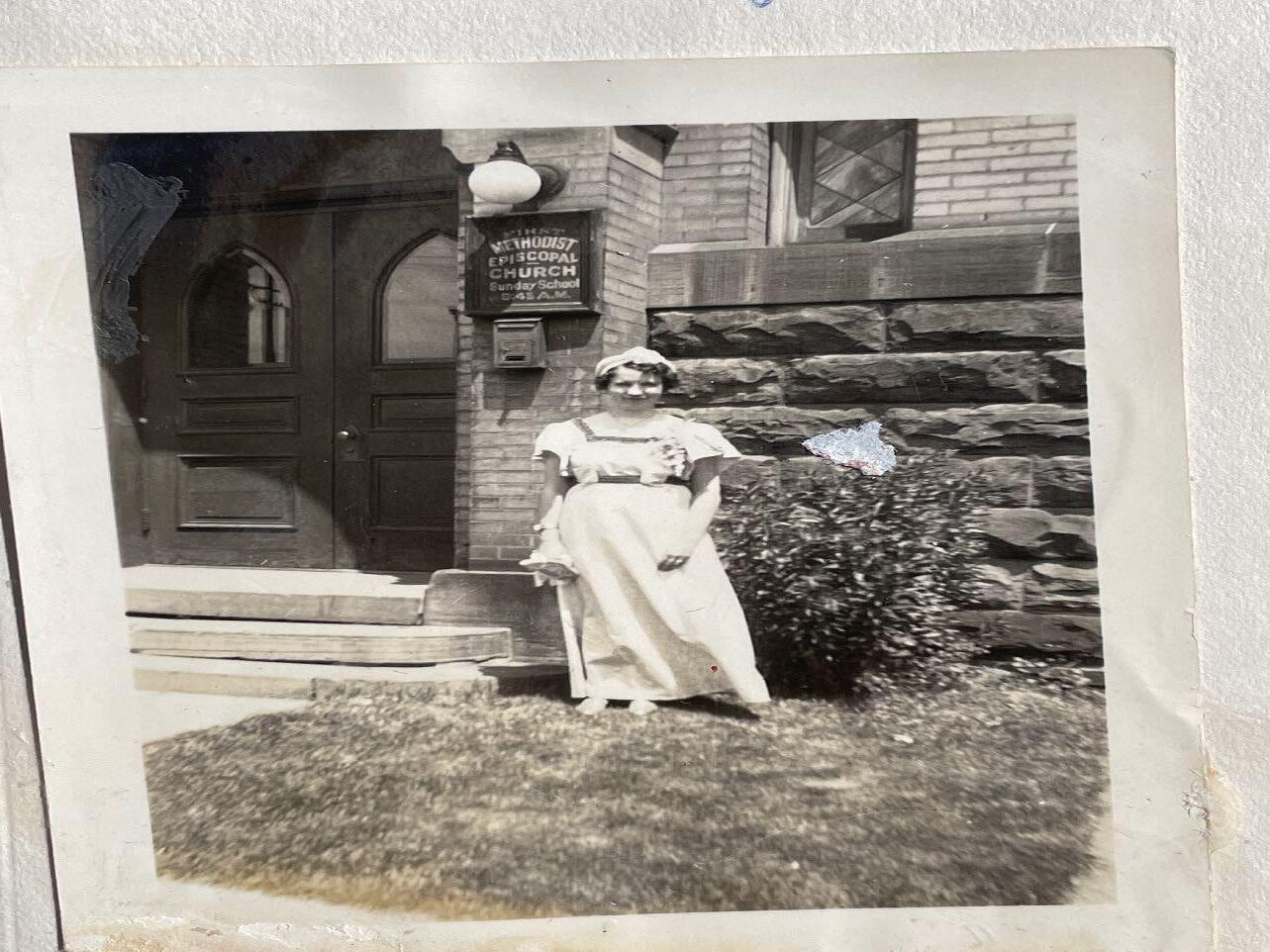

Our wedding ceremony in Salt Lake City was attended by Eva’s mother, her sister Illa and niece Illa Merle, Margaret Imes, Eva’s oldest brother’s wife and her daughter Anita. None of my relatives were present.
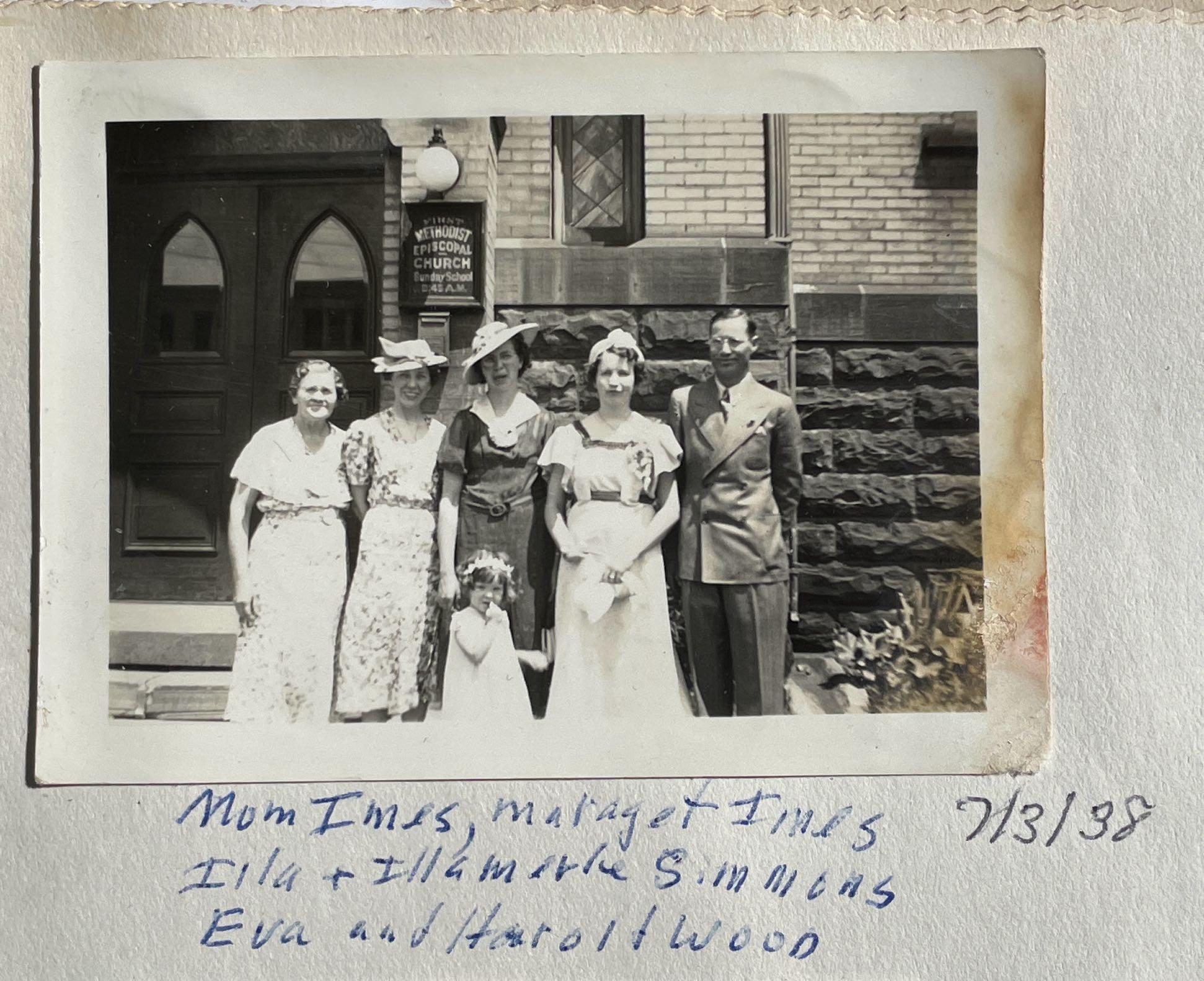


Marriage License and solemnization of marriage of Harold Wood and Evelyn Imes at Methodist Episcopal Church, Salt Lake City (but really Provo - Utah County, Utah), 3 July 1938. Unlike the marriage license application made the day before, 2 July 1938, this does not identify the parents of the couple to be married. The License was from County clerk of Utah County, and the solemnization took place in Salt Lake City at the Methodist Episcopal Church. Note that the bride signed her name as “Evelyn Imes Wood.” Her mother, Mrs. Eva Imes, was one of the witnesses, along with the bride’s sister Mrs. W.J. Simmons [Illa Mae Simmons].
Note the lack of middle names; the groom is just listed as Harold Wood and the bride as“Evelyn Imes.” Even though she always went by Eva, like her mother, her birth certificate name was “Evelyn Eva Carol Imes,”
Harold Wood was indeed living in Corvallis, Benton County, Oregon at the time, attending Oregon State University. But I was surprised to see Evelyn Imes giving her residence as Lawrence, Douglas County, Kansas because immediately before and after this she was in California.
I was still in veterinary training. Eva had a good teaching job in California. She ended the work for our expenses. This meant we would not be able to live together for two more years. At that period of time, teachers were not allowed to hold their position if they were married. We kept our secret!

Sidebar: Indeed, as documented by the California Department of Eduction, the state’s published “Rules for Teachers” adopted in 1872 stated: “Women teachers who marry or engage in unseemly conduct will be dismissed.” By contrast, “Men teachers may take one evening each week for courting purposes, or two evenings a week if they go to church regularly.” See: https://www.cde.ca.gov/nr/re/hd/ yr1999hd05.asp (accessed 20 July 2020, citing Tracing the Roots of Teacher Tenure, California Journal, (May 1999), 10-18, by Sigrid Bathen (PDF; 3MB; Modified 22-Apr-2009). https://www.cde.ca.gov/nr/ re/hd/documents/yr1999hd05.pdf
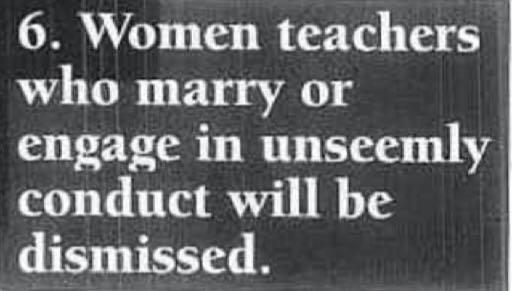
From California Rules for Teachers, 1872.
These strict rules were similar in other states. Even as late as 1941, Mary Louise Phillips, a young elementary school teacher in Arizona, was being “courted” by another young teacher, Wilson Riles. She recalls: ”Wilson wanted to get married, but I knew I would immediately be fired, because at that time women teachers in Phoenix were not allowed to be married. I had just gotten my first job, and I didn't want to leave it, but Wilson was tired of going back and forth." On Nov. 14, 1941, they eloped, keeping the marriage a secret for a couple of months. "I was finally persuaded by my family that no job was worth that.”
The rest is California education history Mary’s husband, Wilson Riles, who died in 1991 at age of 81, rose to become the California Superintendent of Public Instruction in 1970, the first statewide black elected official in California.
As Sigrid Bathen writes in Tracing the Roots of Peachier Tenure, “Today, the strict codes of behavior from the first part of the century are the stuff of legend. “The rules for women teachers ranged from not having men in your home, and you can't be married, to the hours you could be out on the street,’ says Rick Simpson, Governor Gray Davis' legislative secretary. ‘It seems sort of quaint today, but it also spoke volumes about the perceived roles of professional women.’ Women teachers were told how to dress (skirts below the ankle), organizations they could not join (women's suffrage groups). They could be—and were—fired for any reason, or no reason.”
These marriage bans increased during the 1930’s. “Nine states had marriage [work ban] laws prior to the Depression,” writes historian Megan McDonald Way, “and by 1940, 26 states restricted married women’s employment in state government jobs.” https://www.history.com/news/great-depressionmarried-women-employment
According to Wikipedia, At the beginning of World War II, in the United States 87% of school boards would not hire married women and 70% would not retain a single woman who married. https:// en.wikipedia.org/wiki/Marriage_bar citing Goldin, Claudia (October 1988). "Marriage Bars: Discrimination Against Married Women Workers, 1920s to 1950s". NBER Working Paper No. 2747, 1988. doi:10.3386/w2747. https://www.nber.org/papers/w2747.pdf
While many women hid their marital status in efforts to keep their jobs, marriage bars were not banned by law until 1964 when Title VII of the Civil Rights Act of 1964 prohibited discrimination in employment on the basis of race, color, sex, or ethnic origin.
Source: Houseman, Susan. "Anti-discrimination Laws". United States Department of Labor. Archived from the original on 7 September 2018. Retrieved 6 December 2018.
By careful planing, I succeeded in completing my Veterinary degree requirements by June, 1940.
After the wedding ceremony Eva and I drove to a small town north east of Grand Junction Colorado. That town is now named Hurricane.
Sidebar: A Google search on 12 July 2020 reveals no town in the State of Colorado with the name “Hurricane” or anything similar. There is a “Hurricane, Utah,” but that is located in the far southwest portion of the State of Utah, far from Grand Junction, Colorado. Nearly towns to the east of Grand Junction include Clifton and Palisade, De Beque, and Parachute. To the west are Appleton, Redlands, Fruita, Loma, and Mack.
The city of Grand Junction is located in Mesa County. It is located within a 30-mile (48 km) arcing valley, known as the Grand Valley. Since the late 19th century it has been a major fruitgrowing region, which would explain the honey bee keeping there.
I worked that summer for Rocky Mountain Bee Culture Laboratory, Laramie Wyoming, on a research project.
The summer months of July thru August 1838 was hectic. First of all, we had no honeymoon. Secondly, Eva became severely ill. It was a miracle she survived! Her condition was not properly diagnosed. For weeks Eva stayed inked most of the time with ice packs on her right lower abdomen. The doctor’s diagnosis was kidney disease (nephritis). He prescribed very little medication - a blue pill only.
With complete rest and ice packs, Eva’s condition improved. In early fall, she returned to her teaching job in California. I returned to Texas A & M.
Eva’s ailment re-occurred a few weeks after her return to work. An internist diagnosed her condition as phlebitis.
She recovered slowly. Two years later we found that Eva had three separate ruptures of her appendix which had not been properly diagnosed. It was a miracle that she had survived.
The anchor held!
I worked that summer
I had long hours of work with the honey bee project. An epidemic of equine encephalomyelitis (horse sleeping sickness) invaded the immediate Colorado area. It became known I was a veterinary student. The County veterinarian encouraged me to quit my civil service beekeeping work to help him. Instead of resigning my commitment, I did considerable volunteer work with he county veterinarian.
For the 1938 Christmas holidays, we were together in California. I returned to Texas A & M for the the following year.
Sidebar: “It is estimated that since 1930 nearly a million horses and mules in the United States have been affected by infectious encephalomyelitis. The disease, known popularly as sleeping sickness and brain fever, is believed to have been present in this country for several decades, although the specific cause—a filtrable virus—was not discovered here until 1930.
“In 1930 and 1931, an estimated 6,000 horses and mules contracted the disease in California alone {39), During the next few years the malady gradually spread eastward through Arizona, Oregon, South Dakota, Colorado, and Nebraska, finally involving every section and practically every State in this country and some of the Canadian Provinces.”
“Equine Encephalomyelitis” by L.T. Giltner and M.S. Shahan, in Keeping Livestock Healthy: Yearbook of Agriculture 1942, U.S. Department of Agriculture, U.S. Government Printing Office, 1942.
I attended summer school during the summer session of 1939. Eva came to be with me. She was unable to find suitable employment in teaching in Texas. However, immediate relief teaching in California was available. Eva pulled anchor. This was necessary for us to survive financially during my senior year at Texas A & M.
We were absent from each other until June 1940 [The university actually specifies the graduation date as May 31, 1940.) when I graduated from Texas A & M.
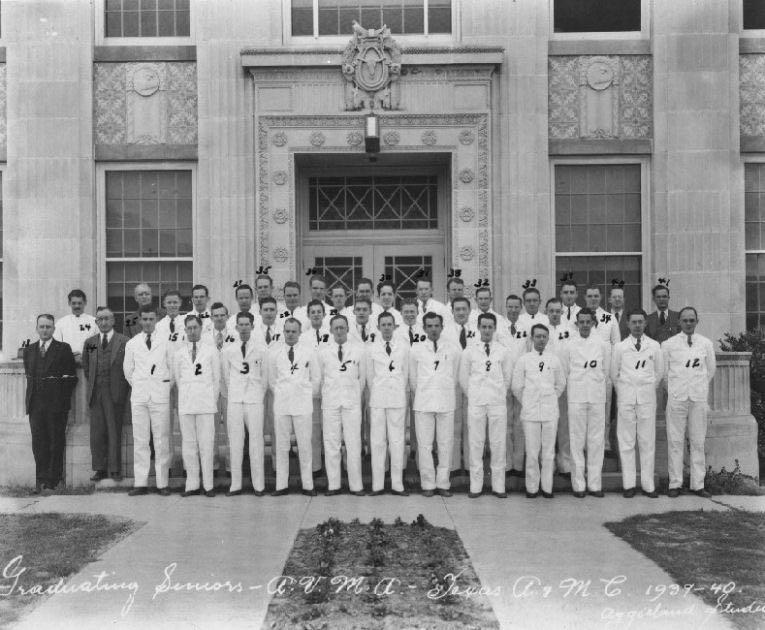

We had anchored in rough water, but this time the anchor held for over forty years, when Eva’s sudden death (December 28, 1980) left me widowed.
A final note by Harold W. Wood, Jr.:
All of the foregoing was unknown to me, until I read this story written by my Dad in the late 1990’s, but not found by my sister among his papers until 2020. (It had been filed in a folder labeled “short stories” instead of with his other memorabilia)
But one thing I still wonder about is why Dad never mentioned their second marriage ceremony which I discovered in doing genealogical research?
It turns out that my Mom and Dad got married a second time on Jun 9, 1940 in Salome, Arizona, by a Justice of the Peace, just a few days after Dad had received his D.V.M. degree from Texas A & M. Salome is a small town west of Phoenix, Arizona, and east of Blythe, California. It is well over 1,000 miles from College Station, Texas where the Texas A & M University is located. Salome is located on U.S. Highway 60, which was the main drag between Phoenix and Los Angeles until the 1970s, when the federally-funded I-10 interstate freeway replaced it, leaving the town rather stranded today.
But according to a recent article in Phoenix magazine, in the 30’s and 40’s, it was an important watering hole along the route, and a mecca for couples eager to tie the knot.
“Back then, there was a constant stream of traffic on Highway 60,” says longtime resident Thomas Davis. “To service all the vehicles, there were a dozen gas stations along the road within 10 miles of town.” The town’s founder in 1904 had mapped out Salome’s future by supposedly naming it after the biblical femme fatale and promoting the town with road signs depicting a sinuous temptress with the caption, “All the bumps and curves are not on the road.” [The truth is more prosaic; the town was actually named for Mrs. Grace Salome Pratt, wife of one of the town’s founders. But, indeed this is “where she danced” as she tried to walk barefoot across the hot sand, prompting her husband to deliver the Salome epithet to the town as appropriate. McDaniel, Chris (November 9, 2012). "Author tells story of The Salome Sun". Yuma Sun. Yuma, Arizona.) In any case, Salome would be transformed into an irresistible beacon drawing southern Californians. The name of the Biblical dancing girl seemed especially appealing to the matrimonially inclined. Impatient lovebirds tying the knot were the first wave of visitors in the 1930s.
“California required an interminable three-day waiting period for marriages, while Arizona did not. Just 63 miles from the California border, Salome became a marriage mecca. The town’s false-front Justice Court advertised folksy slogans like “No Waiting No Delay! Get Married Here To-Day.” In the days before “Vegas-style” drive-thru weddings, Salome enticed visitors with such service-oriented signage as “Day Time Just Walk In” and “Nite Time Just Ring the Bell.”
An April 1949 Arizona Highways article notes that Justice of the Peace John A. Provorse lived in the building, performing 3,022 ceremonies in ten years in a community of 300 residents. He rendered 24 hour service, from license to benediction.
It turns out that J.P. John A. Provorse was the same Justice of the Peace who married my parents in the town June 9, 1940! Thus, I can share a couple of photos showing precisely where my parents had their second wedding ceremony performed!
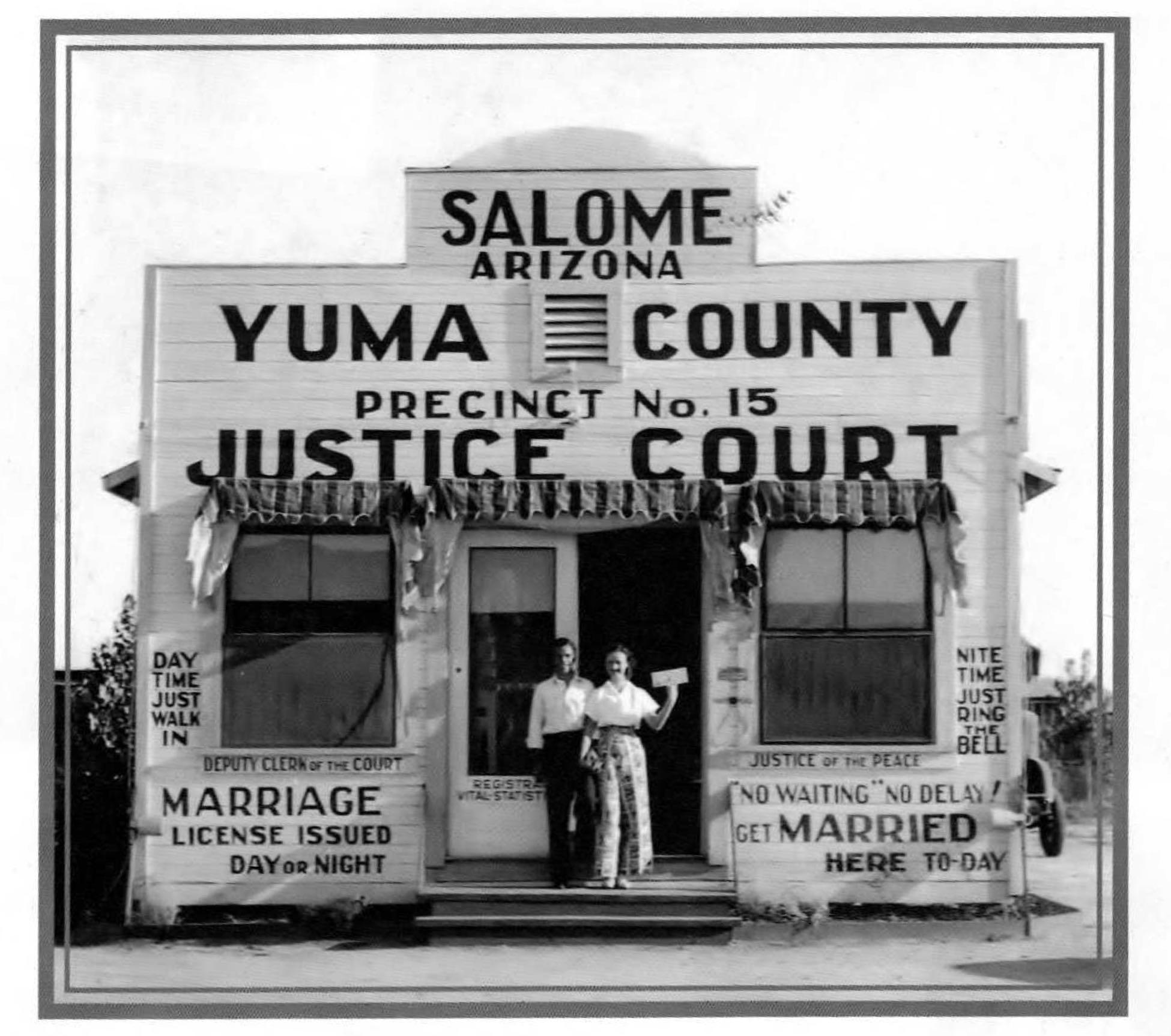
Just 63 miles from the California border, Salome became a marriage mecca. The town’s false-front Justice Court advertised folksy slogans like “No Waiting No Delay! Get Married Here To-Day.”
In the days before “Vegas-style” drive-thru weddings, Salome enticed visitors with such service-oriented signage as “Day Time Just Walk In” and “Nite Time Just Ring the Bell.”
Photo source: Phoenix Magazine, February, 2012.
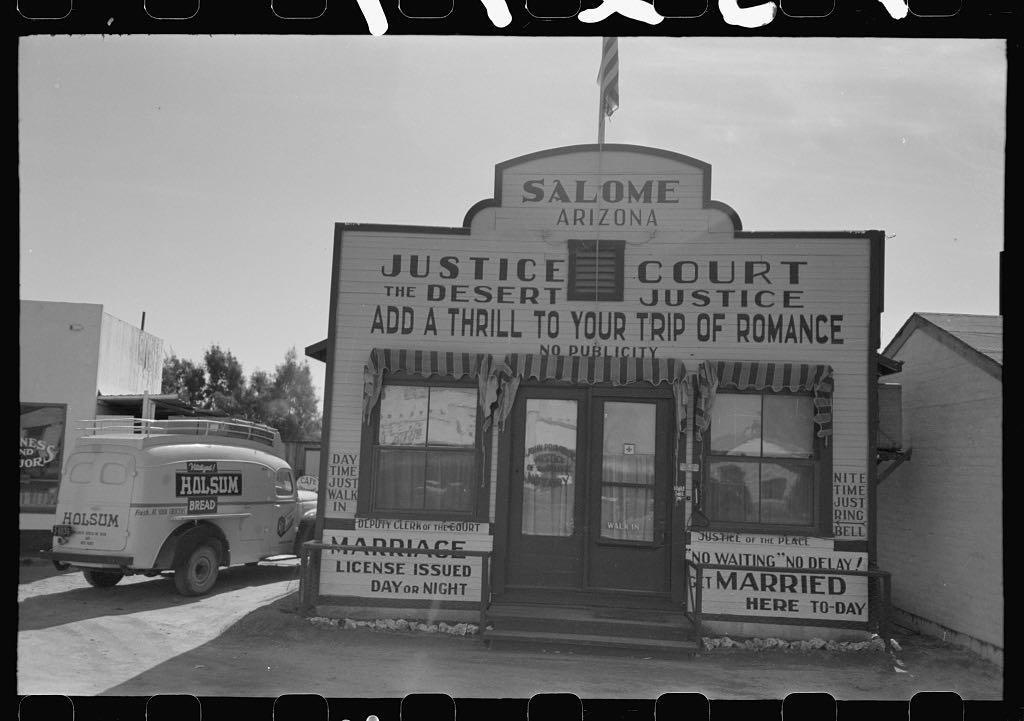
By 1942, the Justice Court in Salome had removed the “Yuma County” text, and added some advice: “Add a thrill to your trip of romance! (No publicity.) (Salome has been part of La Paz County since 1983, but in the 1940’s was still part of Yuma County.
Source: Lee, R., photographer. (1942) Marriage mill, Salome, Arizona. United States Salome. Arizona Salome, 1942. Feb. [Photograph] Retrieved from the Library of Congress, https://www.loc.gov/item/ 2017744682/.
Visitors arriving in Salome after dark would be unlikely to miss the opportunity - this neon sign brightly advertised “Justice of the Peace - Marriage Licenses Issued and The Knot Tied”. If you couldn’t read, the shape of the sign itselfa gigantic heart, and the neon double valentine hearts with an arrow clearly communicated what this Justice Court could provide!
Lee, R., photographer. (1942) Marriages here, Salome, Arizona. United States Salome. Arizona Salome, 1942. Feb. [Photograph] Retrieved from the Library of Congress, https://www.loc.gov/item/ 2017744680/.
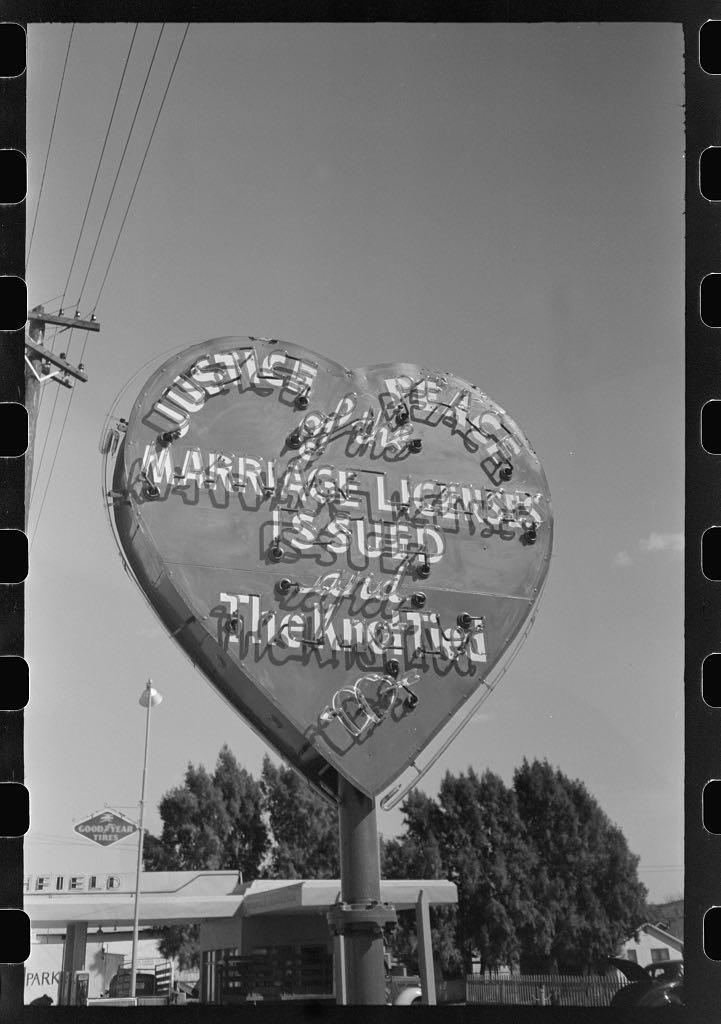
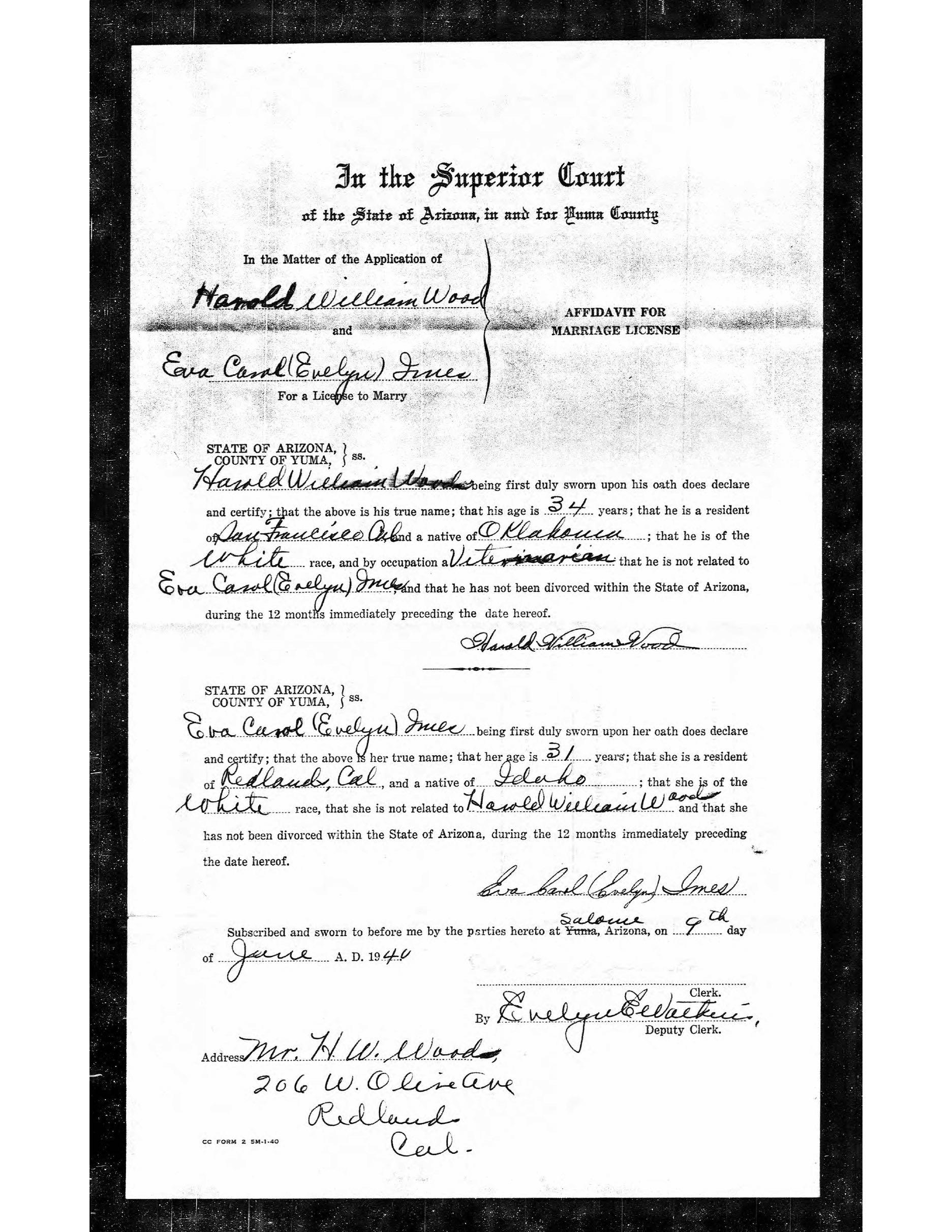
Yuma County, Arizona Marriage
As their son, I recognize the handwritten signatures as being in their own handwriting.
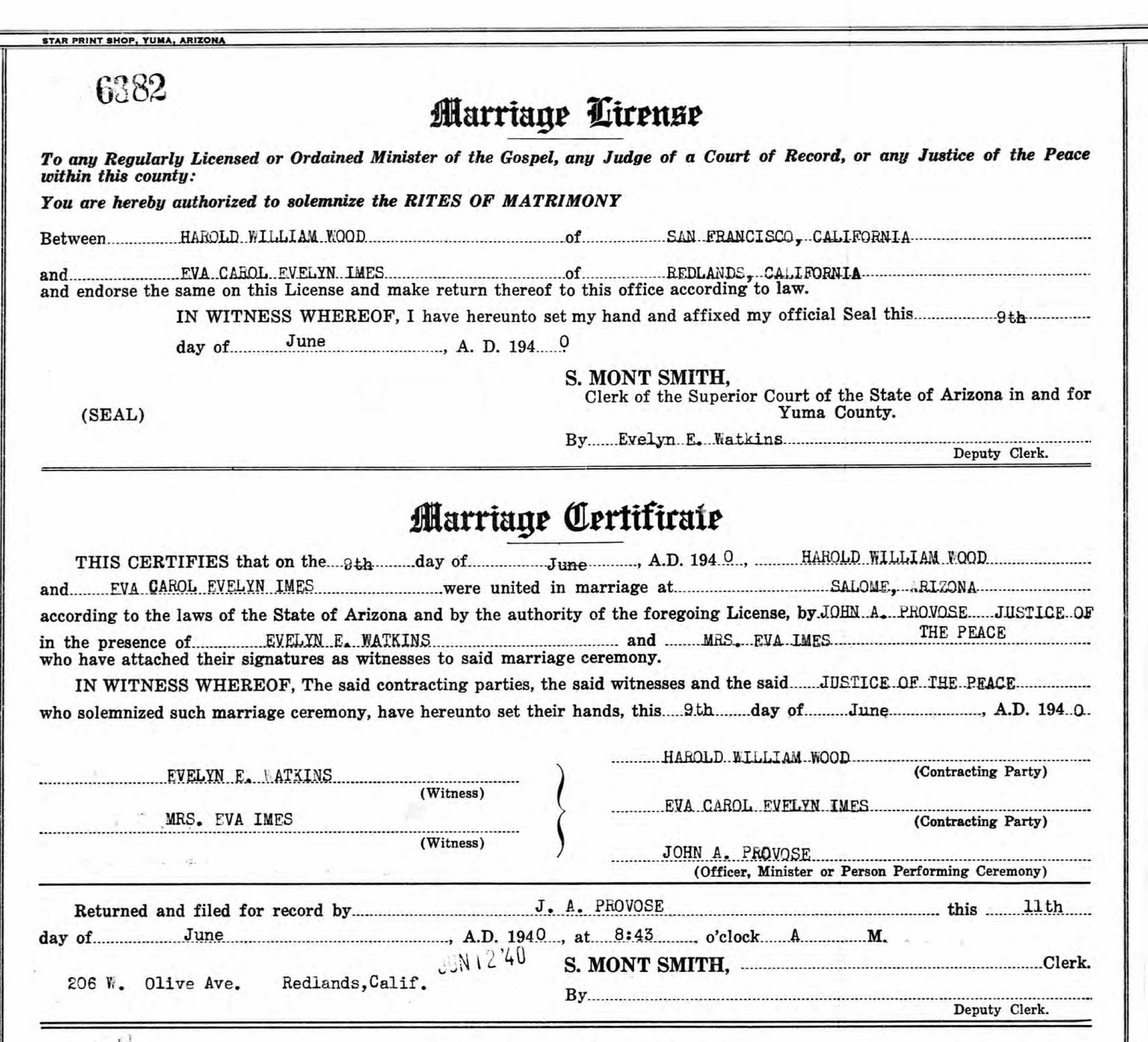
1940 Yuma County, Arizona Marriage Certificate - Harold Wood - Eva Imes. The "witness" named Eva Imes was the bride's mother, who had the same name.
Further name confusion is found in the name of the Justice of the Peace. In this Marriage Certificate, his name is clearly spelled “John A. Provose.” However, in the Business and Professional Directory of Arizona for 1939, he is identified as “John A. Provorse”, and listed in nearby Wenden, rather than Salome proper. See: https://azmemory.azlibrary.gov/digital/collection/azcitydirect/id/95 (accessed 10 June 2021).
The other witness listed here “Evelyn Watkins” is unknown - probably staff of the Justice of the Peace who performed the marriage.
Besides this story of the location of their second wedding, the information contained in the marriage certificate and affidavit raises some other interesting questions.
In the Salome marriage affidavit, my mother lists her residence as Redlands, California, well over 200 miles to the west of Salome. Indeed, the 1940 U.S. Census, taken in Redlands on April 23, 1940, shows her and her mother Eva Imes living at the same address listed on the marriage certificate, 206 W. Olive, Redlands, California.
Interestingly, my Dad listed his residence as San Francisco. I have been unable to find him listed in the 1940 census anywhere, but he had lived most of that year in College Station, Texas.
This time, my Mom used the full name “Eva Carol Evelyn Imes” as her maiden name, whereas in the 1938 marriage in Utah she had used her birth certificate name, “Evelyn.”
Perhaps because their church wedding in 1838 was “secret,” they felt they needed to remarry again publicly? Or perhaps using the name “Evelyn” (as was on her birth certificate, but not the name she went by (which confusingly, was also the same name as her mother“Eva”) in the original marriage documents was a problem, so they wanted to cure it with the new name? Since my grandmother attended the Salome ceremony, it seemed to have been more than just a lark or a spontaneous decision.
In any case, this 1940 second marriage in Salome was duly solemnized and recorded, as shown by the documents below. My grandmother, Eva Imes, who also lived in Redlands at the time, is listed as a witness.
My parents, however, always told me they were married in 1938, not 1940, so they must have considered their “real” marriage as the earlier one.
